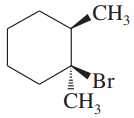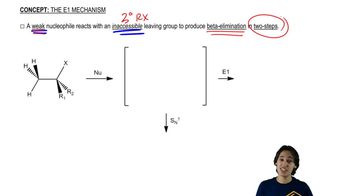What is the major product formed when the following compounds undergo an E1 reaction?
b.

 Verified step by step guidance
Verified step by step guidance Verified video answer for a similar problem:
Verified video answer for a similar problem:



 1:18m
1:18mMaster Defining Zaitsev’s Rule with a bite sized video explanation from Johnny
Start learning